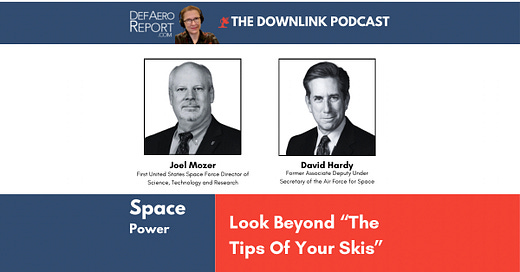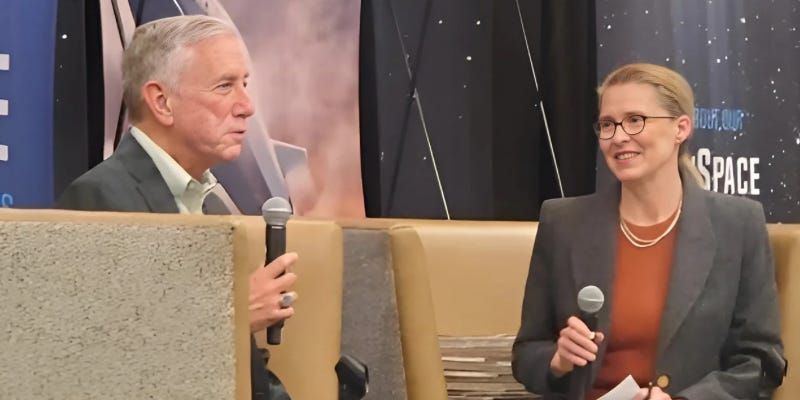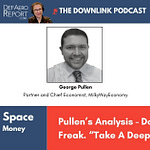Hey there,
I’m slowly but surely catching up. This week I’ve been in New Mexico at the State of the Space Industrial Base to participate in space business discussions and listen to the sagacity being deployed by some of New Space’s thought leaders.
Participants at events like this should, and do, take this intimate networking opportunity to consider possible futures for New Space. The term New Space refers to young or new companies and their novel technologies. Government organizations sometimes refer to these companies collectively as “non-traditional” companies, in contrast to prime contractors.
The futures considered and debated usually fall in line with the traditional planning, tasking, requirements, and procurement cycles associated with the Department of Defense or NASA. The time horizons are usually three years out, sometimes more.
What this episode is about is the future beyond. Think 10, 20, 40 years. How do we conceive and think about the possible futures, so that we can start investing in being ready for it?
Future lunar human pressence. Image: JAXA.
I’m diverging from my usual format to bring you a guest essay written by this episode’s guests Joel Mozer, the first United States Space Force Director of Science, Technology and Research, and David Hardy, a former Associate Deputy Under Secretary of the Air Force for Space.
Over the course of three years, Mozer, with support from Hardy, conducted more than half a dozen “Space Futures” workshops with more than 100 participants to conceive and consider a range of possible futures and just how the U.S. Space Force and the United States could prepare to meet challenges and maintain strategic preeminence in the space domain.
Mozer and I first explored this subject in January. You can listen to that discussion here: “Space Tech: What The First Space Force Chief Scientist Says Must Change”
These “Space Futures” workshops produced an official report, “Beyond the Tipping Point: Space Strategic Foresight Implications for National and USSF Action.” I highly recommend spending some time reading it as it explores potential futures and “flexible and agile strategies that balance immediate challenges with long-term preparations for an increasingly complex, dynamic, and uncertain future in space.”
You can read this Space Force report here on the on the Innovation Hub website. The innovation Hub is a “collaborative partnership between VT-ARC, Space Systems Command, and The Air Force Office of Scientific Research.”

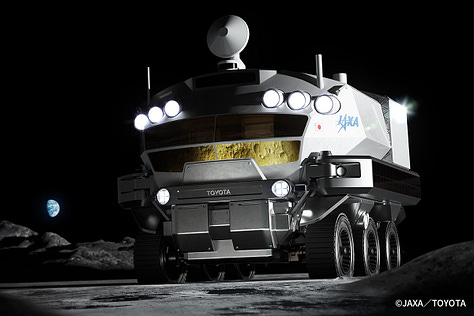

Why Strategic Foresight Matters for the DoD: Readiness, Resilience, and Risk Avoidance in an Era of Space Competition
Joel B. Mozer, USSF Chief Science Officer Emeritus
David Hardy, USAF Deputy Undersecretary of USAF for Space (ret.)
In today’s volatile strategic environment—marked by rapid technological change and escalating geopolitical competition—the value of long-term visioning and strategic foresight cannot be overstated. For the Department of Defense (DoD), and especially the United States Space Force (USSF), strategic foresight is not merely a theoretical exercise—it is a mission-critical capability.
The USSF Space Futures Workshop series underscores why foresight must be embedded into the fabric of military planning and operations. One of its central messages is that the U.S. is no longer navigating a slowly evolving space environment; instead, it is contending with a domain that has passed a strategic tipping point, rapidly expanding in complexity, congestion, and competition. To compound matters, the world has never seen conflict in space, so we have little experience from which to develop expectations and doctrine.
First and foremost, strategic foresight is essential to maintaining military readiness and lethality. The DoD cannot afford to be reactive in a domain as unforgiving and rapidly evolving as space. The foresight process equips leaders to anticipate and prepare for both near- and far-term futures—enabling agile force design, dynamic operational concepts, and technology investments that align with long-range challenges. It helps the DoD balance today’s urgent priorities with the capabilities needed for what the report calls the “Space Force After Next”—the mid-2040s and beyond.
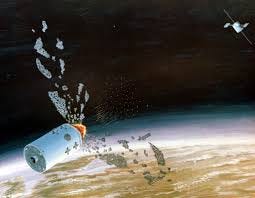
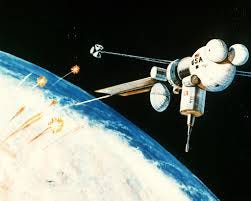
Vintage artist concepts of space warfare. Image: National Archives and Records Administration
Strategic foresight also plays a pivotal role in avoiding technological and operational surprise. The U.S. military has often been caught off guard by disruptive changes—from the U-boat tactics of WWII to the resilience of adversaries in Vietnam. Space is no different. Without a proactive foresight process, the U.S. risks being overtaken by adversaries who exploit emerging technologies, asymmetric tactics, or gray-zone activities. The report warns of potential shocks from adversaries, commercial actors, or even unexpected alliances in the space domain. Foresight allows the DoD to stress-test its assumptions, explore wildcard scenarios, and hedge against surprise by identifying early indicators and preparing early responses.
Critically, foresight invites decision-makers to explore the plausible and even the slightly implausible as a means of expanding their mental models. This cognitive stretching is particularly vital in times of crisis when the fog of war clouds judgment and favors those who can think creatively under pressure. Scenarios that lie beyond the expected force leaders to confront uncomfortable possibilities, rehearse novel responses, and identify hidden vulnerabilities. As a result, they develop the flexibility to recognize and adapt to real-world situations that diverge from conventional expectations—an invaluable skill in contested and ambiguous environments.
Importantly, foresight also serves a de-escalatory function. By understanding the long-term trajectories of geopolitical actors, technologies, and potential conflicts, foresight supports the development of norms, alliances, and preemptive confidence-building measures that can reduce the risk of miscalculation. The USSF, for instance, is urged to take a leadership role in shaping international space law and behavior norms, precisely to avoid unintended escalation in an increasingly contested domain.
In short, strategic foresight is not optional—it is foundational. It enhances readiness, sharpens lethality, stretches imagination, mitigates risk, and strengthens peace through preparation. As the Beyond the Tipping Point report makes clear, foresight must be institutionalized across the DoD as a continuous process—driving investments, shaping operating concepts, and informing strategic decision-making. Because in space, as in war, victory belongs to those who see further.
David Hardy and I discussing Strategic Foresight at the State of the Space Industrial Base Conference and Workshop, April 30, 2025. Image: Namrata Goswami, who also presented at this event.
I think I’ve probably given you enough reading this week. So have a great weekend and look out for the next episode of The DownLink Podcast which features George Pullen speaking about the macro economy, tariffs, investing, the equity markets, and the space economy.
Ad Astra,
Laura

